Turkish van: description of the breed of cats, maintenance and breeding
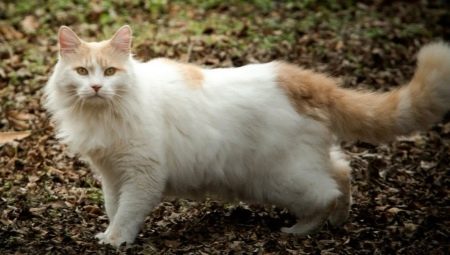
The Turkish van is considered one of the oldest cat breeds. Today these cats are incredibly popular and prestigious among breeders. Possessing external beauty, cats have unique habits and original color. The material of our article will acquaint readers with the nuances of keeping and breeding these cute creatures. Also, you will learn what this pussy looks like and how it came to be in Europe.
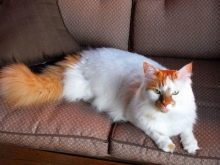
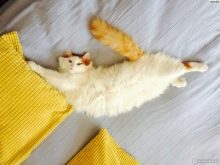
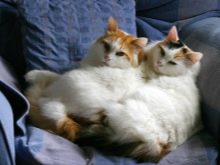
Origin story
The Turkish van belongs to aboriginal breeds, formed in a certain area under the influence of natural factors. The origin of animals is lost in the mists of time; Eastern Anatolia of Turkey is considered their homeland. For the first time, cats were seen near Lake Van, from where they took part of their name.
In Turkey, cats were called "bath katu", which means "a cat from Lake Van".
The breed has existed since the Middle Ages, however, it was officially discovered in Europe in the mid-1950s.


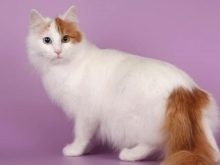
In 1955, Englishwomen Laura Lushington and Sonya Halliday went to Turkey on an official assignment to photograph local sights. It was in Turkey that they saw adorable white cats, which they received as a gift from local residents.
The Englishwoman noticed the unusual features of the characters of the kittens on the way to the airport. Stopping to rest by the stream, the girls took the kittens with them, and they jumped into the water with pleasure and began to frolic in it. These individuals were registered in England as the first Vanir, they were named Van Atilla and Van Guzelli Iskenderun.About 4 years later, the journalist again visited Turkey, from where she brought four more kittens.

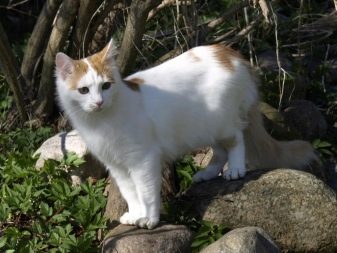
This is how the selection of Vanir began in Europe. However, they were included in the standard by the International Federation of Cat Fanciers only in 1973. As for other versions of the origin of exotic cats, a remarkable legend is also known that is told in Turkey. According to her, when Noah's ark was sent, the devil, who was watching what was happening, decided to drown him.
To this end, he let a small mouse into the ship, which was supposed to gnaw a hole so that through it the ark was filled with water and sank to the bottom along with everything that was on it. The devil planned to kill a person so that he could not be saved and multiply. Knowing this, God told the white cat on the ark to catch the mouse.
As a reward for completing the task, God touched her with his hand, which is why reddish spots formed in the places of contact, which in Turkey to this day are called the "fingerprint of the right hand of Allah".
It is thanks to these marks that the cat is considered revered and loved. She should not be offended, so as not to incur God's wrath.
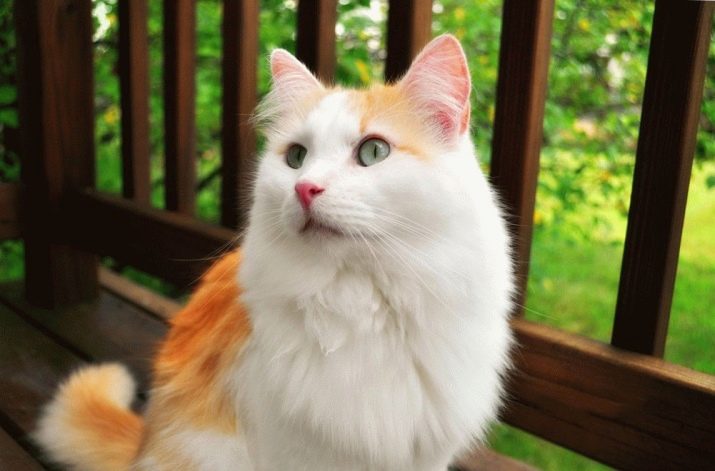
Description
The Van cat differs from the usual domestic counterparts in its dimensions. Females of the breed weigh from 4 to 6 kg, the weight of males can be 5-10 kg. These animals have a surprisingly strong body, which is not typical for fluffy cats. It is large, its shape is long and streamlined, slightly tapering towards the back. To a greater extent, this feature is expressed in male Vanir.
The length of the cat from the nose to the tip of the tail is on average 1 m or more, the height usually reaches 40 cm. In this case, the individual, as a rule, has a short neck and wide shoulders. The muzzle of cats is larger than that of females, it is angular, resembling a wedge with rounded contours and high cheekbones. Van's forehead and chin are rounded. In general, the muzzle of animals is quite neat, characterized by a pronounced pinch.
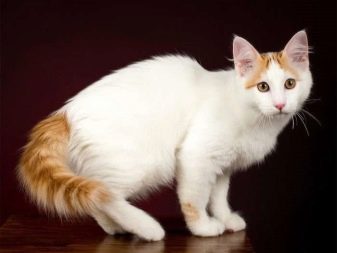
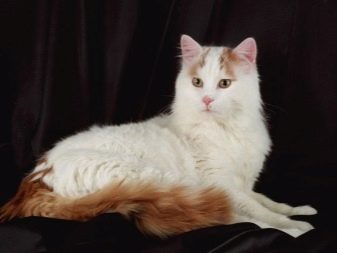
The eyes of cats of this breed can be either round or slightly elongated, tending to an oval shape. Their fit is slightly sloped, and the color scheme may vary. Moreover, the eyes of representatives of the Turkish cat breed can be painted in different colors.
For example, they can be blue or amber. There are individuals with different colors of both eyes.
The shape of the ears of the Turkish Van resembles the ears of wild tribesmen (for example, a sand cat). They are large and broad, set wide and high. Their outer edge is almost vertical. As for the paws, in these cats they differ in length: the front paws of the representatives of the breed are shorter than the hind ones. The paw pads are neat; woolen tassels are observed between the toes.
Wang's tail is considered to be his decoration: it is long, fluffy and painted with a barely noticeable strip. The length of the tail hairs in adults often reaches 5 cm. The hair of a cat with a fur collar is single-layered and semi-long, it does not have an undercoat. In the summer, it becomes more rigid, however, this does not affect its features in any way. It is waterproof, which explains the exotic cats' love for water and bathing where they enjoy swimming.
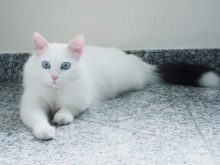


Life span
Such a cat has lived for more than 10 years. However, the life expectancy of a Turkish Van depends on various factors. For example, this can be the environmental background of a particular region, the frequency and duration of outdoor walks, observation by a veterinarian, the timeliness of vaccinations and the regularity of preventive examinations. On average, cats of this breed live 15–20 years. But if the care of the animal is poor, as evidenced by the lethargy and apathy of the pet, its life may be shortened.
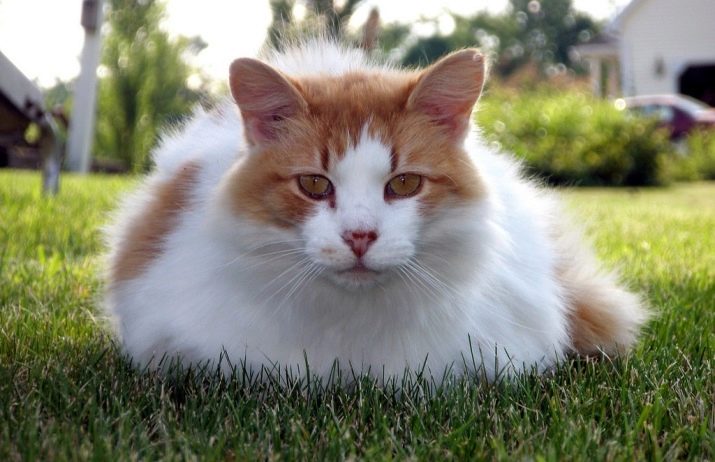
Types of color
The color of the cat is unique: the main background is white, spots on the head, ears and the tail itself can be colored red, cream or even black. In addition to solid white with colored markings, the Van cat can be tabby with white. This pattern can be pronounced or barely noticeable, which makes the tabby classic or striped.
For example, a red tabby implies a reddish-cream base of stains that show markings of a warm red or even chestnut hue.
The blue tabby pattern has a pale ivory base at the base. The markings themselves are bluish in color, this color is unique and unusual. The brown tabby color is based on cream beige, with black markings. The white body can be stained with red and gray spots, other individuals are black and white.
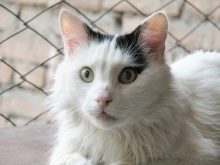
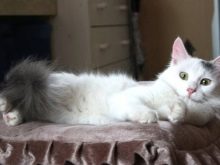
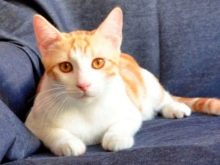
Among the representatives of the Van cat breed, there are individuals with a tricolor and spotted color. For example, individuals may have a tortoiseshell coloration, in which black and reddish spots are located on light red areas. Tortoiseshell color can be diluted, for example with bluish and creamy tabby patches on bleached peach patches.
In addition, these cats are characterized by patched tabby (torby) and diluted torby colors. Also, among the representatives of the breed, you can find individuals of other colors. For example, a van may have silvery or even smoky spots on a white body. There are other individuals without signs of hybridization (for example, Himalayan, chocolate, purple type). The spots on the body are rather a rarity in the color of such cats.

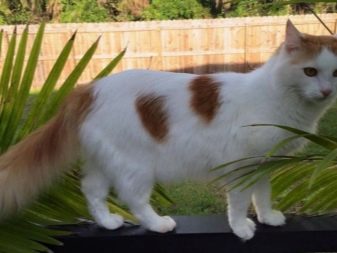
Character traits
The Turkish van is considered one of the most human-attached pets. The Van cat is distinguished by intelligence and ingenuity, it is one of the most energetic breeds of the cat family. Individuals of the breed are very active and spend a lot of time in active games. Moreover, they love to involve the owners in their games, they understand the slightest hint of a game proposal and are happy to activate.
The breed finds entertainment in everything. They can drive around the house not only candy wrappers, but even folded sheets of a notebook, easily climb on cabinets and cling to window curtains. These cats are not busy - they have enough energy for two. The pet will always ask what the owner is doing, because he likes to be in the center of events.
However, if a van is attached to household members, this does not mean at all that he loves to be picked up and squeezed. In general, he misses the owners, cannot be alone for a long time and often greets a person with joyful speeches, "speaking" in his own language. Excessive talkativeness of a cat can be a problem for family members, because the van loves to talk at night when everyone wants to sleep.

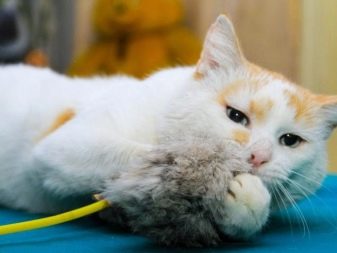
As for relationships with other pets, the Van cat gets along well with them as long as they do not strive to take a leadership position or build aggressive tactics of behavior. An exotic cat will not provoke conflicts, he will not offend children.
He is extremely negative about noise and tries to avoid such places. Neither does he like loud music.
Wang's behavior is often compared to a dog: the pet is trainable. He can be trained in different commands, he can perform simple tricks, he wears small objects and his own toys in his teeth. Individuals of the breed often stand on their hind legs, which is not typical for many domestic brethren. However, muscular cats are not always delicate in games, they are strong, and therefore it is not recommended to leave them alone with small children.... On purpose, a cat will never offend a child, but he may not calculate his strength.
The Van cat needs physical activity and loves interactive toys. Rarely does any individual allow himself to use his time aimlessly: despondency is alien to the Van. They are cramped in a small apartment; they need a large area for normal growth and development.In a confined space, due to its mobility and craving for exploration, the van will quickly turn everything upside down.

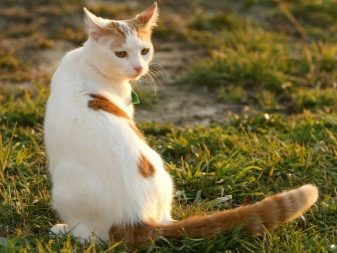
A play complex with a scratching post is an excellent distraction for a Van cat, and the size of the corner should be large, it should contain at least several toys. Tired of games, the animal can splash in the water, which is not only not afraid, but also adores. The van enjoys swimming, frolics and often bask in the water, likes to swim in a pool or shallow water. Kittens of the breed are very active, they do not know laziness, curious and very affectionate, although they cannot stand unnecessary care. They prefer to flatter themselves to family members, rather than being in their hands, like toys.
As practice shows, most of the Vanir singles out one of the family members and loves him more than the rest. The cat understands him so well that he often surprises with his behavior in the tone of the owner. One gets the feeling that she is aware of the emotional state of a person, adjusting to it. For example, he may feel sorry for the owner if he is upset or, conversely, instantly tunes in to an active game, playing along with a person who wants to play with his pet.
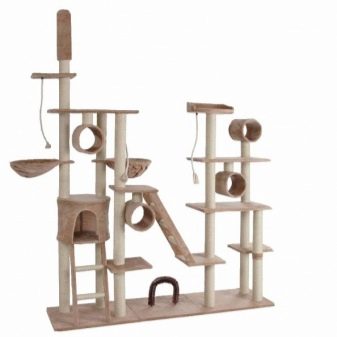
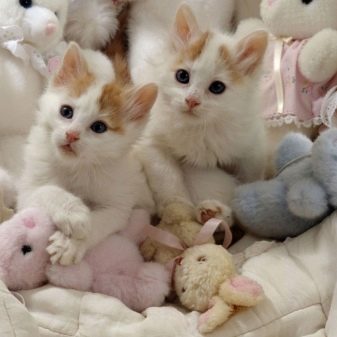
Due to her ingenuity, she quickly gets used to the tray and harness, as well as organized walks in the fresh air. It is also noteworthy that the van can run a race with a person or jump in height, if the owner chose one of these games.... Some cats repeat the exercises after the owner.
These animals do not like either enclosed space or darkness, and therefore their corner is in a lighted place.
Vans are very demanding of themselves. They will not allow you to miss a walk on the street and will “tell” the owner about it in a loud voice. They have developed facial expressions, which will make it possible to understand the cat's excitement and his disagreement with the fact that his interests were not taken into account. The cat will express dissatisfaction even if the feeding time is missed. The animal quickly gets used to the diet and daily routine, it also understands the time when it should be fed.

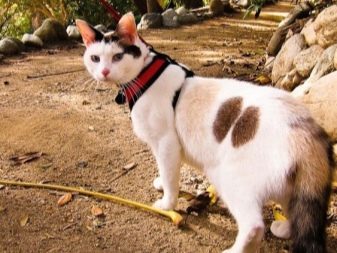
Conditions of detention
Of course, it is better for a pet to live in a private house, where he can often be outdoors and walk with the owner. If, at the same time, there is a pool near the house, this is even better - the van will gladly splash in the water in between various explorations and games. If desired, he will find entertainment for himself in the water, he will be able to swim and play with the owner. The abundance of fresh air will favorably affect the development of the cat, he will be strong and muscular, with excellent immunity.
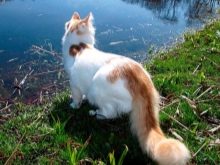

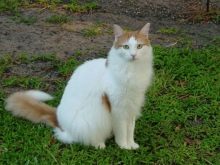
Hygiene
It is important to take care of the animal's coat, comb it out in a timely manner, although it is not prone to excessive tangling. This should be done on average once a week, paying special attention to the long-haired tail. During the shedding period, you need to take care of the wool more often. She brushes well if you do the procedure every day while the cat is shedding.
Do not forget about hygiene of ears, claws, teeth and eyes. Approximately once every six months, it is necessary to visit a veterinarian for the purpose of a preventive examination. If the cat began to constantly fiddle with its ears, this may indicate the presence of parasites, which need to be disposed of with a special drug. The dosage, frequency and the medicine itself are selected by the doctor, taking into account the age of the animal.
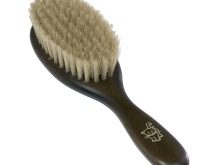
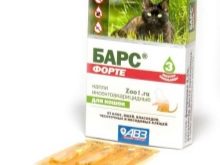

Periodically (about once every six months), the cat needs to be given a drug for worms, choosing the dosage taking into account the weight. The presence of parasites may be indicated by white eyes that appear in the inner corners of the eyes. In this case, it is also important to contact your veterinarian on time. It is also important to consult a specialist about the weight of the pet, because the health status and even the mood of the pet depends on it.
For claws it is worth buying a scratching post, it can also be part of the play complex.
In order for the cat to have something to do in the absence of the owners, it is preferable to purchase for him a large playground with different toys.
At the same time, it is important to ensure that the product is stable and reliable in terms of the material used.
It should not suffer from the slightest touch of the cat, be resistant to its claws and teeth. Some breeders purchase special wool brushes that can be attached to the wall. Some cats adore the brushing procedure and when the owner cannot pay attention to them, they themselves rub against the brush, and often not only with their sides, but also with their muzzle.
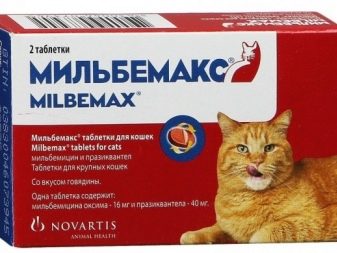
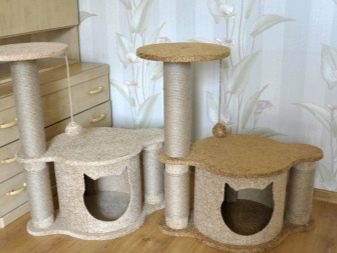
Comfort
In order for the cat to understand its place, you need to take care of buying a bed with high sides. If you wish, you can do it yourself, and your own production allows you to create sometimes more interesting models up to the houses. You can also take care of a hammock on a battery. Such a device will help the van to bask in the off-season, when the heating is not turned on yet.
You can also make a mink in which the pet can track down the owners during games. As for other everyday nuances, one of them is thinking over the water supply system. Some cats quickly figure out how to turn on a one-handed tap to make water flow. They figure out how to use the doorknobs, because they will not ignore any corner of the house in the absence of the owners.
The more toys the cat has, the better: in addition to observing what is happening on the street through the window, it will take most of his time in the absence of the owners. For a cat to be smart, upbringing is necessary, which will continue throughout the life of the pet. He has an amazing memory, during his life he is most attached to one master and does not change this attachment. If the cat is brought up correctly, he will not cause trouble for the household.



Education
Training begins from childhood, at this time kittens can afford to hiss and be unfriendly to others. For example, they can bite, scratch and hide from a person. This disadvantage is eliminated by the breeder: it is thanks to him that the cat becomes friendly. However, some kittens are more friendly and flattering.
You need to accustom a kitten to yourself gradually: in addition to regular feeding and training to the litter box, from time to time you need to pick it up, stroke it, talk to it.
Under such conditions, the baby quickly forgets past habits and gets used to the household. If the kitten does not respond to the teaching and continues to behave badly, it is slightly lifted by the withers, showing who is in charge in the house. As a rule, the pet perceives such lessons adequately and quickly realizes that it is necessary to behave well.
In general, Vans are highly trainable and rarely cause trouble for their breeders. If a kitten has a good taste for a person, he begins to purr. In this case, he is well-tuned and completely trusts the owner. During the first year of life, the animal understands all the rules in the house. Like all family members, he obeys them, becomes independent and learns to communicate.
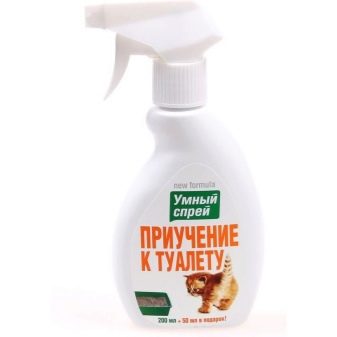
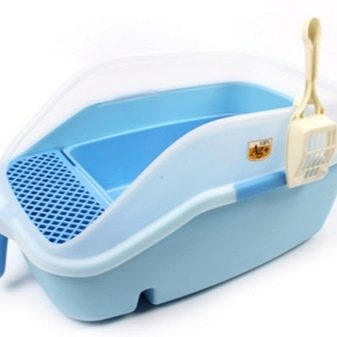
Feeding
It is necessary to feed the Van cat correctly: you cannot exclude natural food from the diet, relying on industrial food. It cannot fully compensate for the lack of all the substances it needs, and besides, it can harm health, no matter how advertising claims the opposite. Meat and fish should be a must in a nutritious diet.
You need to select food taking into account the age category of the animal. In order not to overfeed the baby, it is necessary to take into account the dosage of feed, taking into account the weight. Wang loves natural food, for example, he eats lean meat, vegetables, cereals, dairy products, and offal well. In addition to all this, he needs vitamin and mineral complexes. If the kitten's nutrition is balanced, its weight will change every month.
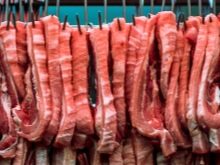


If the breeder prefers to buy dry food, it is better not to skimp on its quality. In this case, it is better to purchase meat products without preservatives.However, it is worth noting that food alone over time can harm the health of the cat. In addition, after some time, the animal may completely abandon natural food, which is very bad, because whatever the food, it will not replace the nutrients contained in natural food.
If the pet does not receive vitamins and minerals, it will become drowsy, and hair loss may begin. You cannot feed a cat with food from your table, and therefore after a meal it is necessary to clean everything from it, because the cat is curious and may be interested in what attracts this or that household food, which is interesting in a bottle of milk. She herself needs food with a sufficient content of proteins and carbohydrates. Fish for van needs boiled and deboned. The cat should not be offered to eat chocolate, sweets, honey, pickles or smoked meats - this food is harmful for him, leads to allergies and tooth decay.
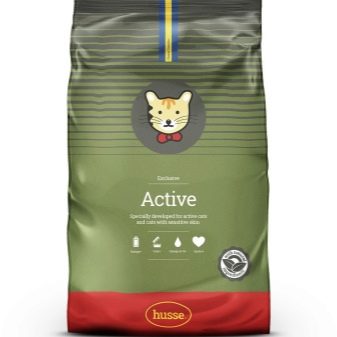

Health
Due to the naturalness of its breed, the Turkish Van is distinguished by good health, representatives of this breed do not have genetic diseases. Only in rare cases can a cat get cold when bathing. Washing it too often is undesirable, the bathing water should be warm. A sign of excellent health of a cat is its weight, however, this does not mean at all that the cat can be overfed. With excess weight, the activity of the animal decreases.
There must be a bowl of water in the house. Wang does not have to search for water on his own, anywhere. In natural habitat, water is in sufficient volume. A cat's teeth are usually strong; in the absence of vitamin deficiency, they will serve him all his life. If the owner noticed that the van lost at least one tooth, an urgent need to contact the veterinarian.
In this case, complex treatment will be required.
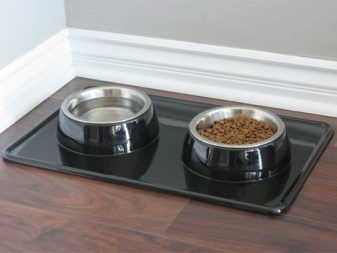

Selection rules
You need to choose a kitten in a professional nursery, looking after a two-month-old baby. At this time, he was already accustomed to the tray and the scratching post, and besides, he was socialized and vaccinated. Ideally, it is advisable to bring the kitten from abroad. He will have all the necessary documents, and besides, he will be a purebred.
If this option is not feasible, you must first decide on the choice of the cattery, flipping through the reviews about it, asking about the purity of the breed, the availability of the necessary documentation (veterinary passport of the kitten) and pedigree. The kitten must be active and nimble, in addition, its appearance must be well-groomed. Before the purchase, it is necessary to find out the nuances of his health, draw up and sign an agreement in which, in addition to the price, the conditions for the transfer of the animal and its further maintenance will be described.

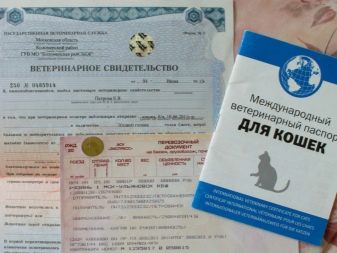
At the time of purchase, the kitten you like must be vaccinated. It is also important to pay attention to the color. As for the documentation, it is worth considering: the best pedigree is the one in which the greater number of Wang's relatives are indicated. If the kitten is picked up, but he is not yet two months old, he is not taken away. And the reason for this is not only not all the necessary vaccinations, but also the need for primary immunity, which the baby receives with the milk of the mother-cat.
You cannot take a tiny baby, because if it is too early to tear it away from its mother, it will be painful. In addition, it is the mother who teaches the rules of the game, as well as behavior, in the first months of each kitten's life. She also shows how to go to the toilet.
If you get into a professional cattery, you will not be sold a tiny kitten, this is tantamount to the loss of a representative of the breed.
Among the breeders of the Turkish Van, every purebred individual is valued. Even if the baby is left without a nurse, breeders offer different options, but these are additional difficulties associated with special care. An interesting nuance is that such a kitten will not be given to everyone who turns to the cattery. The buyer must be trusted by professional breeders.
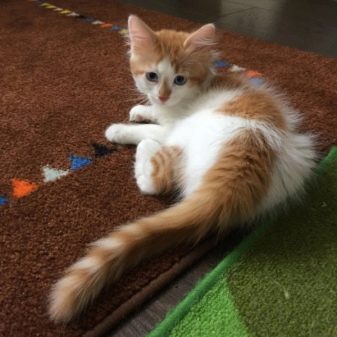
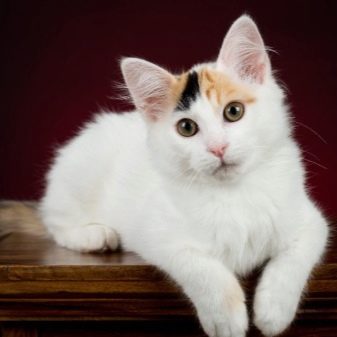
Breeding
Knitting of Turkish vans is made according to the standard scheme. This is unacceptable until the animals reach the age of one year; two estrus in a cat must be skipped. As a rule, 3 to 6 kittens are born in a litter. They are born blind with little hair.
Cat mothers are very attentive to their children. They are caring, protect kids from any danger. Difficulties in breeding may arise due to the search for a partner: in our country it is not easy to find a cat or a cat for mating, and in order to acquire an authentic cat it is necessary to go to Turkey.
The price of a kitten in Russian catteries can range from 8 thousand rubles. There are few nurseries in the country, kittens that are brought from Turkey are sold at a higher price, moreover, a special veterinary certificate is required for export. The price of an individual may also depend on the pedigree. Some breeders estimate kittens at several thousand dollars.
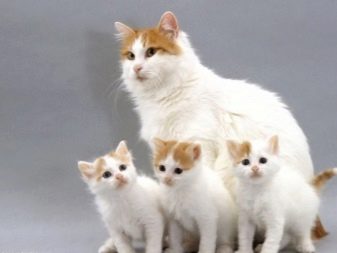
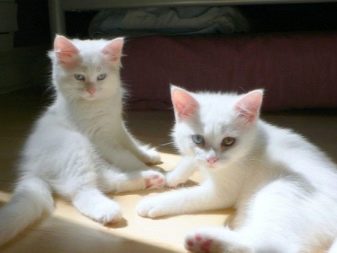
The history of the Turkish van cats is described in the following video.
































